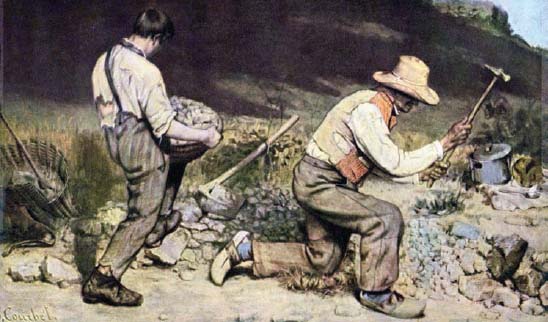From the Industrial Revolution to World War I, C. 1850–1914Late Nineteenth-Century Painting |
Why was Honore Daumier arrested? |
Honore Daumier (1808–1879) was a painter and famous lithographer whose cartoons were regular features in Parisian newspapers; his realist works tended to focus on the plight of the urban poor and frequently criticized the French government, including Louis-Philippe, which got him into trouble. His 1831 lithograph, Gargantua, published in the comic journal La Caricature, depicted the king as “Gargantua,” a grotesque character from the books of French Renaissance writer Rabelais. The king is large and bloated, with thin legs and a pointed head. He sits, “enthroned,” while poverty-stricken French subjects carry heavy loads of offerings in baskets up a ramp, directly to the king’s open mouth. Aristocratic scavengers huddle underneath the ramp, hoping to catch any dropping coins, while in the far right corner, a poor, malnourished woman attempts to feed her baby. Such a negative depiction of the king resulted in a fine of 500 francs and a six-month jail term for Daumier on the charge of inciting contempt for the government and personally insulting the king. This punishment did not stop the artist as in a later lithograph, called Freedom of the Press (1834), Daumier aggressively criticized government censorship. The work of Honoré Daumier demonstrates the role of art as social commentary as well as the power of both image and text.

The Stone Breakers (1849–1850), an oil painting by realist painter Gustave Courbet, depicts hard-working peasants from the French countryside on a monumental scale. The painting is approximately 9 X 5 feet.
